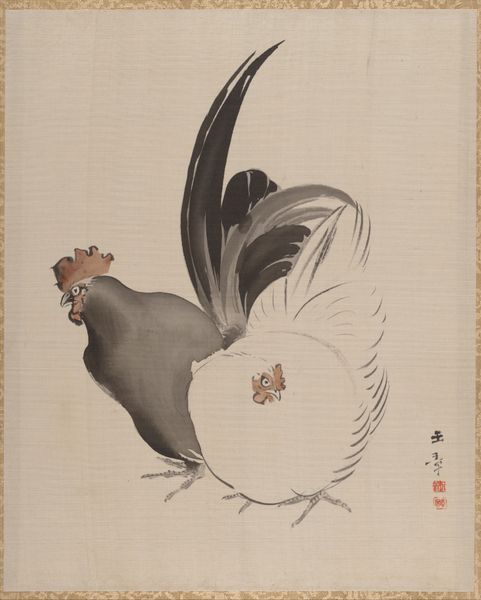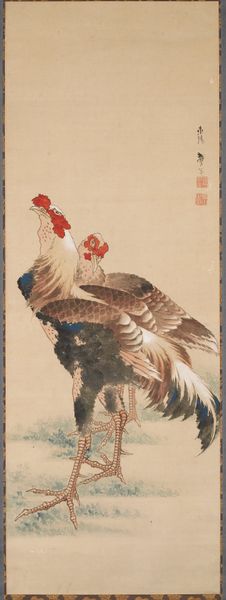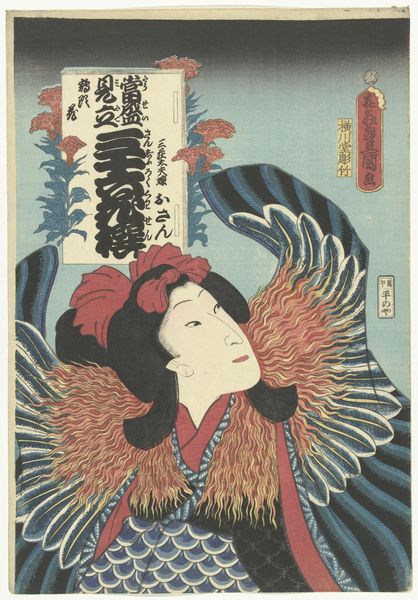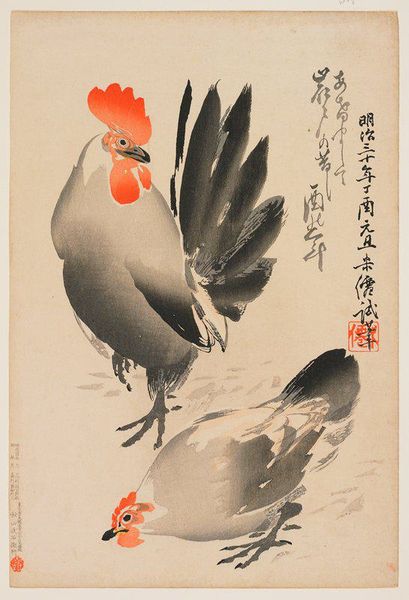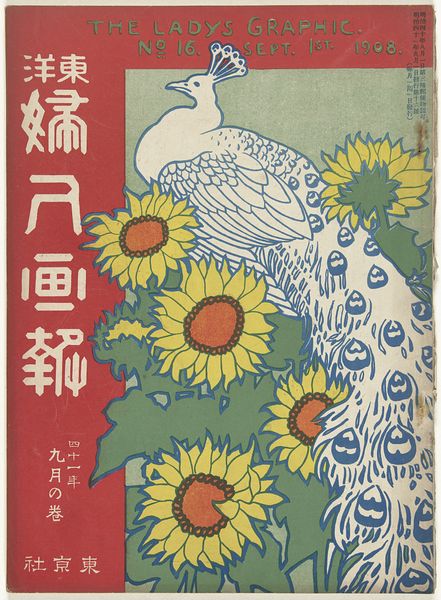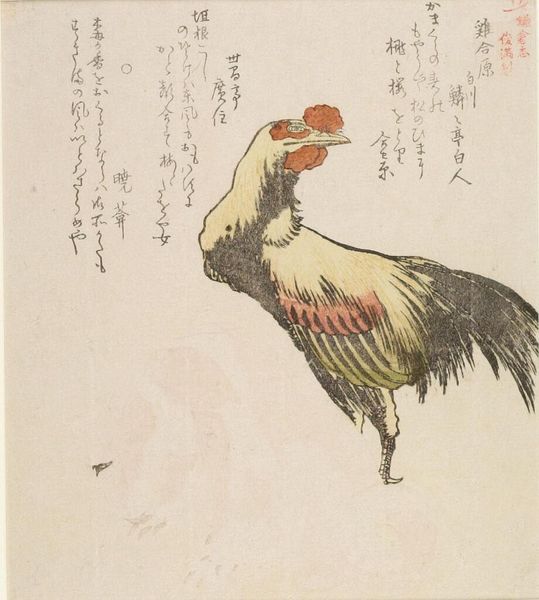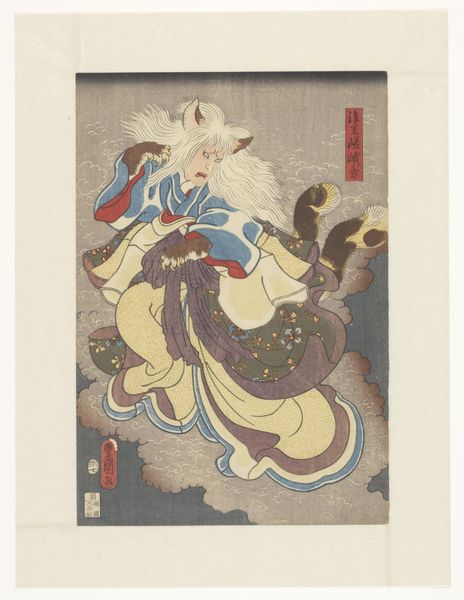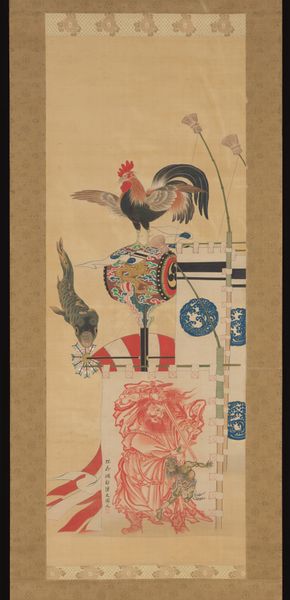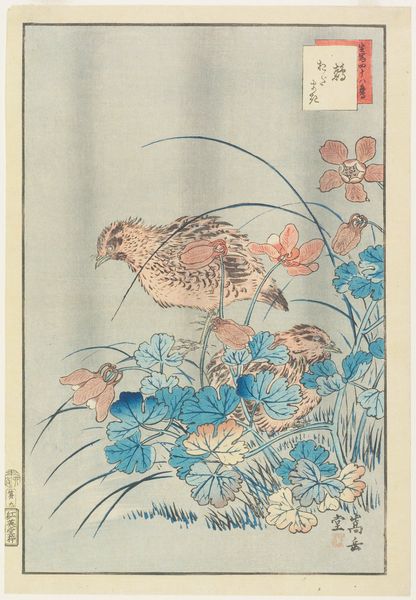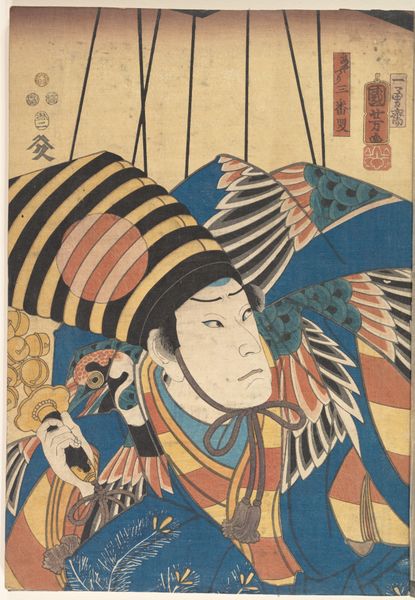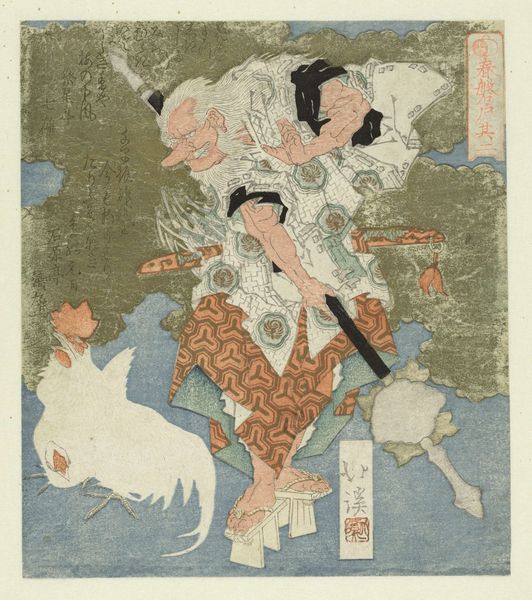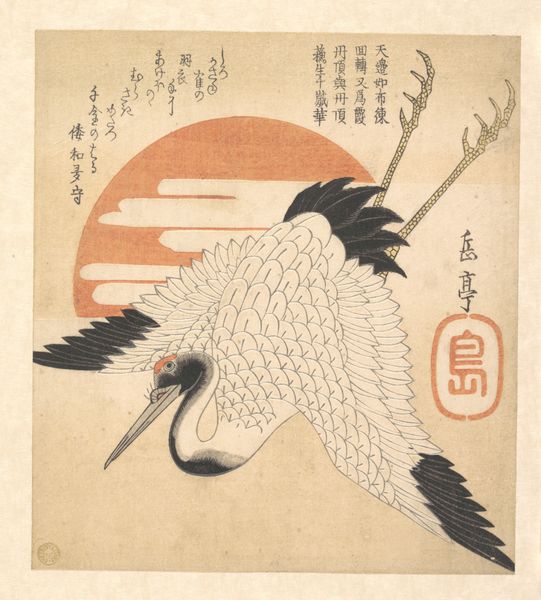
Dimensions: height 252 mm, width 184 mm
Copyright: Rijks Museum: Open Domain
Editor: Ishikawa Toraji’s “Januari 1909,” a print that might be from 1909, features what appears to be a magazine cover. The bold colors and somewhat rough linework give it a striking, almost graphic feel. I'm immediately drawn to the prominence of the rooster. How do you interpret the imagery in this piece? Curator: It’s fascinating how this cover utilizes familiar animal motifs to convey deeper meanings. The rooster, especially in a Japanese context, often symbolizes courage, good luck, and is even considered sacred, linked to warding off evil. Its placement and bold colors assert a sense of authority and dawn, hinting at new beginnings, in line with the "January" theme. Editor: I didn't think about it that way. I just saw chickens! So, the animals might be more than just decoration; they could hold symbolic weight. Curator: Precisely. And observe the hen. Beside the rooster, it likely stands for fertility, domesticity, and nurturing. These images tap into our collective understanding and experiences related to home and family, which were often at the heart of early 20th-century women's magazines. Considering this was titled “The Ladies Graphic”, do you think the chicken was meant to represent the ideal of a strong, new woman? Editor: That makes a lot of sense! The visual language really enriches the themes. I learned a lot about how images, even seemingly simple ones, carry cultural narratives. Curator: Indeed. It’s a prime example of how visual culture informs our perception, making even a common farm animal into a potent carrier of symbolic meaning. A successful icon evokes enduring sentiments and shared stories.
Comments
No comments
Be the first to comment and join the conversation on the ultimate creative platform.
